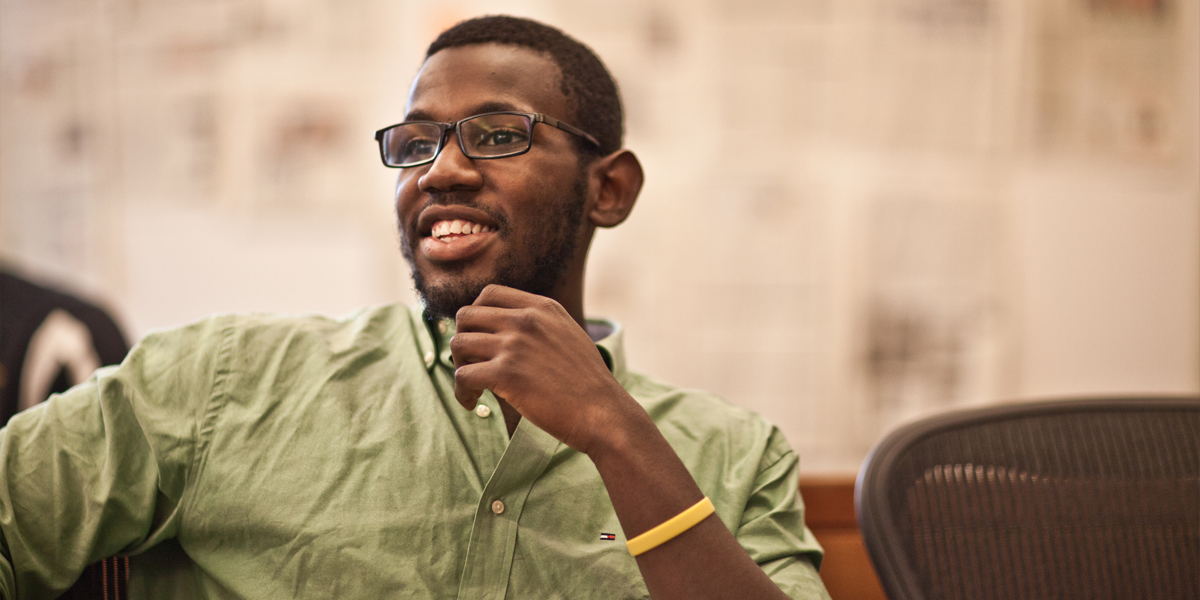
Creativity is like the old joke about the weather: Everyone talks about it, but no one does anything about it. We teach our students how to create balance sheets, calculate the net present value of investments and determine the best target markets — all valuable skills to be sure — but shouldn’t we also be teaching them how to creatively solve problems and find opportunities? If creativity is a skill (and many believe that it is), shouldn’t business schools help their students develop it?
Creativity is like a muscle. Everyone is born with the muscle. Some are born with a “creativity muscle” that few others can match, and they use that potential to go to great creative heights. Think DaVinci, Dickinson and Jobs. Some have developed their muscle through years of practice. But everyone has the muscle. And like any muscle, it atrophies with disuse. But if we exercise it, we can develop it.
There are two equally important parts to creativity: divergent thinking and convergent thinking. In convergent thinking, you narrow down your ideas until you find the one that you will develop into a solution. Divergent thinking, in contrast, is the process of opening up ideas, finding as many solutions as possible. To be creative, you must have both of these processes operating: You develop many ideas, then you narrow down to one.
Our education system has put the focus on the convergent stage. We ask students to find the one right answer on the standardized test, to crack the case by identifying the single most important aspect of it and to make the balance sheet balance. This part of the creativity process is important, but an over-reliance on it, and ignoring the divergent side of the process, has led to an atrophying of the creativity muscle. Creativity expert Sir Ken Robinson, author of Out of Our Minds: Learning to be Creative, believes that the education system actively diminishes student creativity. To (re)build creativity skills, we need to provide students with the opportunity to practice their divergence skills, to try things they might not otherwise try.
In my graduate Enhancing Creativity class we discuss the educational fixation on convergence, and establish an atmosphere in which divergence is the dominant theme. While we never completely ignore convergence, we shift the emphasis away from judging answers to be correct or incorrect, and toward generating many possible answers. This is a difficult shift to make, for the students and the professor, and we accomplish it in many ways, all of which work together:
- Eliminate Judgment. Grading is an inherently judgmental exercise. To minimize the impact of that, I put the grades into the student’s hands. The student decides which grade to shoot for, and completes the assignments that allow him or her to achieve it. Assignments are judged as either acceptable or not, and can be revised after feedback.
- Establish an Atmosphere. I create a feeling of mutual support in the classroom through the use of group exercises that establish a fun, playful mood. Research has shown that fun and play are critical to creativity, allowing more risk taking behavior. My students and I embrace this atmosphere and we all take risks that might be less comfortable in a more traditional class. This article discusses the importance of the correct atmosphere and fun.
- Practice, Practice, Practice. You can’t become a better basketball player without playing basketball, and you can’t become more creative without practicing creativity. I use several in-class exercises that stretch the creative muscle and encourage students to go beyond the obvious answers, and to take a risk on the less obvious answers.
- Dare to Fail. There can be no creativity when fear of failure overwhelms the desire to create something new. Thus, my students know that there is no penalty for failing to develop the “right” solution, the practical solution or even the profitable solution.
For the final project I ask the students one thing: Show me your creativity. This ambiguous assignment makes most of these very accomplished masters students, with their histories of being told exactly what to do and then doing it very well, shriek in terror. But being able to embrace ambiguity is another key characteristic of the creative mind, and most students eventually find the ambiguity incredibly freeing, as it was meant to be. Many of the projects consist of what you might expect from graduate business students: business plans for a new companies, new apps and/or new products. These are perfectly acceptable for the class, and the students are usually justifiably proud of their creations.
However, I know that the class has succeeded when some of the students step out of their comfort zones and go beyond the obvious for this assignment. I have had one-man plays and stand-up comedy routines, spray-painted graffiti art and original music compositions, proposed statistics measuring a baseball pitcher’s productivity and original recipes that fuse very different cultures. When the students are encouraged to exercise their creative muscles, they do, with impressive results.
While the more “traditional” topics taught to business students, and the dominant focus on convergent thinking inherent in those topics, are certainly important, to produce the creative leaders of industry that we all want, we must also instill in them a lifelong appreciation for the divergent phase. I hope that my class starts them on this path, and that they continue to practice the skills I introduce long after the class ends.
Andrew Aylesworth is associate professor of marketing at Bentley.

